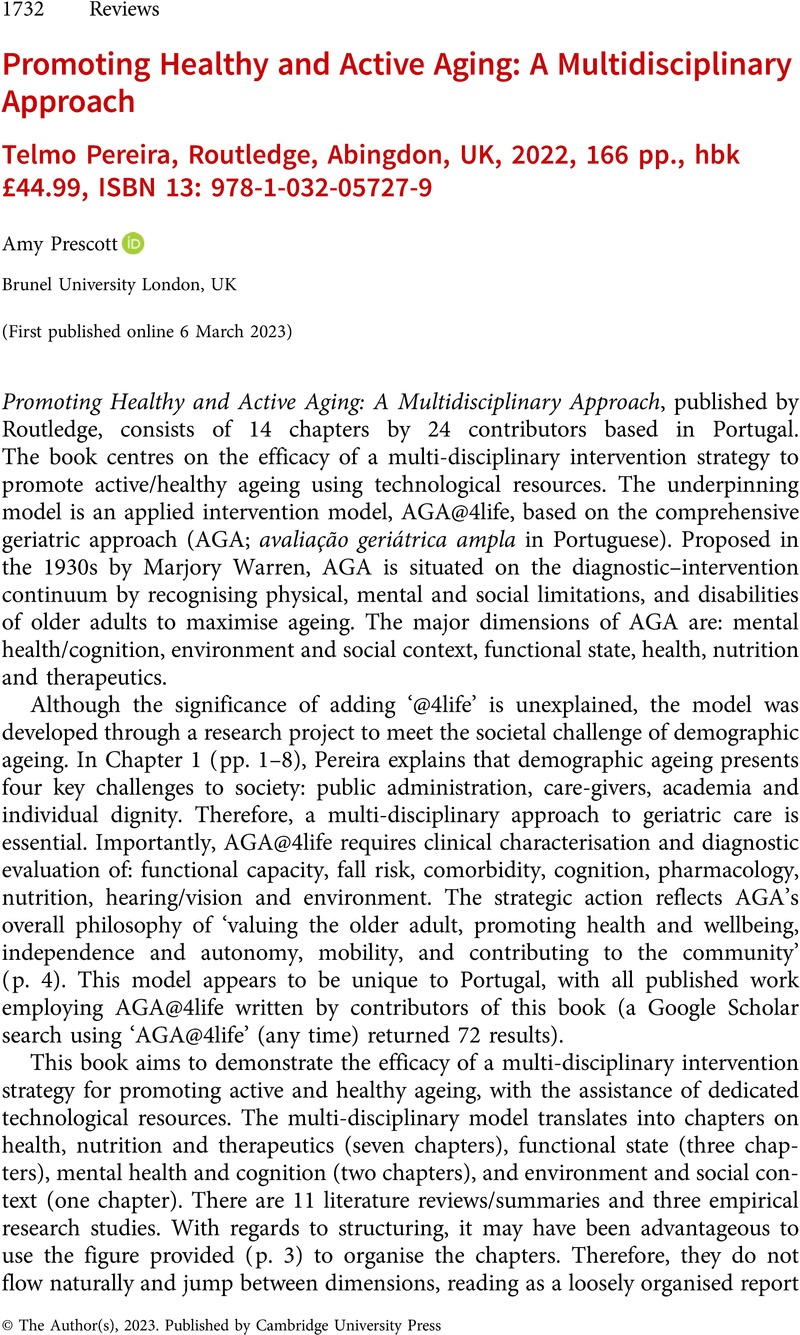No CrossRef data available.
Article contents
Promoting Healthy and Active Aging: A Multidisciplinary Approach Telmo Pereira, Routledge, Abingdon, UK, 2022, 166 pp., hbk £44.99, ISBN 13: 978-1-032-05727-9
Review products
Promoting Healthy and Active Aging: A Multidisciplinary Approach Telmo Pereira, Routledge, Abingdon, UK, 2022, 166 pp., hbk £44.99, ISBN 13: 978-1-032-05727-9
Published online by Cambridge University Press: 06 March 2023
Abstract
An abstract is not available for this content so a preview has been provided. Please use the Get access link above for information on how to access this content.

- Type
- Reviews
- Information
- Copyright
- Copyright © The Author(s), 2023. Published by Cambridge University Press


